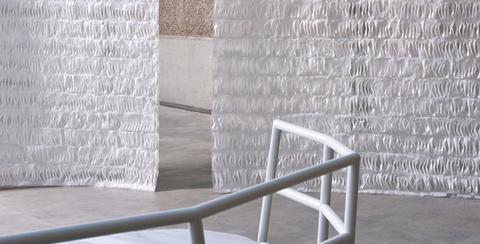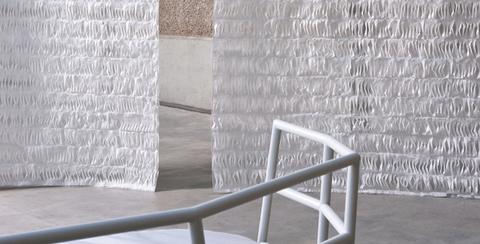Birth, Life, Death and Resurrection, an extraordinary collection of footwear by Benjamin John Hall.

A few years ago, I used to work in the same studio as a top shoe designer. After observing how she worked, I was struck at how the process of designing shoes resembled that of designing architecture, only the product cycle was shorter. With that notion in mind I came across this collection of shoes, by London based designer Benjamin John Hall. The collection might appeal to architects in the way narrative has been explored through structure and form.
The project began as a collaboration with fashion designer Alexander Groover to explore the notion of how we experience birth, life, death and resurrection. The latter element requiring some kind of faith, or spiritual appreciation.
The footwear is subjected to certain situations analogous to life events whereupon they react, creating the finished product. The first pair of boots are born out of a foil sac which, when sectioned, bleeds dark fluid revealing the Amniotic Boots.
This line of thought continues with the Umbilical Geta sandal. It is born when its umbilical cord is tied and cut! The notion of life progresses with the Turbulence Boots and the Ascension Wedge. They incorporate balloons which inflate and burst as life itself begins and ends.
The Refraction Boots and the NDE Skates explore the notion of death with their perspex soles. They apparently refer to the bright light approaching at the end of a dark tunnel. A perception of death that has been reported by those who have had a near-death experience.
But it was the Lazarus Wedge that won the International YKK Award for 2012 at International Talent Support 2012, in Italy. The method of creating the boots is known as “fire lasting” and involves setting fire to the boots in order to tighten the leather. The act of flaming the footwear, is of course to treat the fire as an agent of rebirth or regeneration as exemplified by the rebirth of the mythological Phoenix.
Gratitude to yatzer for introducing me to the work of Benjamin John Hall.














